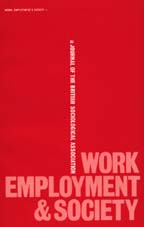Crossref Citations
This article has been cited by the following publications. This list is generated based on data provided by
Crossref.
Curtis, Sarah
Cave, Ben
and
Coutts, Adam
2002.
Is Urban Regeneration Good for Health? Perceptions and Theories of the Health Impacts of Urban Change.
Environment and Planning C: Government and Policy,
Vol. 20,
Issue. 4,
p.
517.
Vingård, Eva
Alexanderson, Kristina
and
Norlund, Anders
2004.
Chapter 9. Consequences of being on sick leave.
Scandinavian Journal of Public Health,
Vol. 32,
Issue. 63_suppl,
p.
207.
Bardasi, Elena
and
Francesconi, Marco
2004.
The impact of atypical employment on individual wellbeing: evidence from a panel of British workers.
Social Science & Medicine,
Vol. 58,
Issue. 9,
p.
1671.
Nordenmark, Mikael
Strandh, Mattias
and
Layte, Richard
2006.
THE IMPACT OF UNEMPLOYMENT BENEFIT SYSTEM ON THE MENTAL WELL-BEING OF THE UNEMPLOYED IN SWEDEN, IRELAND AND GREAT BRITAIN.
European Societies,
Vol. 8,
Issue. 1,
p.
83.
Andersen, S. H.
2008.
The Short- and Long-Term Effects of Government Training on Subjective Well-being.
European Sociological Review,
Vol. 24,
Issue. 4,
p.
451.
Cole, Matthew
2008.
Sociology contra government? The contest for the meaning of unemployment in UK policy debates.
Work, Employment and Society,
Vol. 22,
Issue. 1,
p.
27.
Hald Andersen, Signe
2009.
Unemployment and Subjective Well-Being.
Work and Occupations,
Vol. 36,
Issue. 1,
p.
3.
Taylor, Philip
Jorgensen, Brad
and
Watson, Erin
2010.
Population ageing in a globalizing labour market: implications for older workers.
China Journal of Social Work,
Vol. 3,
Issue. 2-3,
p.
259.
Leach, Liana S
Butterworth, Peter
Strazdins, Lyndall
Rodgers, Bryan
Broom, Dorothy H
and
Olesen, Sarah C
2010.
The limitations of employment as a tool for social inclusion.
BMC Public Health,
Vol. 10,
Issue. 1,
Beck, Vanessa
and
Quinn, Martin
2011.
The Importance of Health in Promoting Employability in the East Midlands.
Sociological Research Online,
Vol. 16,
Issue. 1,
p.
9.
Lamprianou, Iasonas
2012.
Determinants of Early Retirement in the European Union.
Journal of Transnational Management,
Vol. 17,
Issue. 2,
p.
137.
Sweet, Stephen
and
Moen, Phyllis
2012.
Dual Earners Preparing for Job Loss.
Work and Occupations,
Vol. 39,
Issue. 1,
p.
35.
Weckström, Sirpa
2012.
Self‐assessed consequences of unemployment on individual wellbeing and family relationships: A study of unemployed women and men in Finland.
International Journal of Social Welfare,
Vol. 21,
Issue. 4,
p.
372.
Behle, Heike
2012.
Unemployment, Precarious Work and Health.
p.
437.
Young, C.
2012.
Losing a Job: The Nonpecuniary Cost of Unemployment in the United States.
Social Forces,
Vol. 91,
Issue. 2,
p.
609.
Jakobsen, Tor G
and
Listhaug, Ola
2012.
Issue ownership, unemployment and support for government intervention.
Work, Employment and Society,
Vol. 26,
Issue. 3,
p.
396.
Calvo, Esteban
and
Gonzzlez, Pablo
2013.
Calidad Del Empleo Desde Los Enfoques Del Bienestar Subjetivo Y El Desarrollo Humano (Employment Quality from Well-Being Approaches and Human Development).
SSRN Electronic Journal,
Flint, Ellen
Bartley, Mel
Shelton, Nicola
and
Sacker, Amanda
2013.
Do labour market status transitions predict changes in psychological well-being?.
Journal of Epidemiology and Community Health,
Vol. 67,
Issue. 9,
p.
796.
Strandh, Mattias
Hammarström, Anne
Nilsson, Karina
Nordenmark, Mikael
and
Russel, Helen
2013.
Unemployment, gender and mental health: the role of the gender regime.
Sociology of Health & Illness,
Vol. 35,
Issue. 5,
p.
649.
Mertens, Antje
and
Beblo, Miriam
2013.
Self-Reported Satisfaction and the Economic Crisis of 2007-10: Or How People in the UK and Germany Perceive a Severe Cyclical Downturn.
SSRN Electronic Journal,




